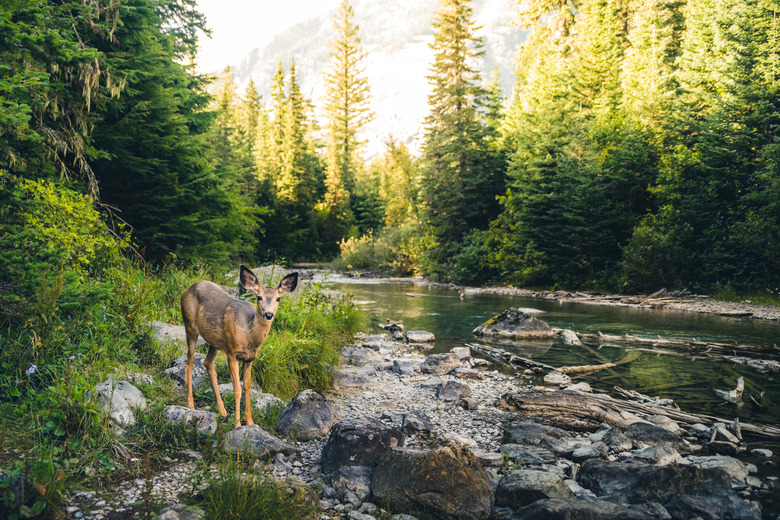The Relationship Between Abiotic And Biotic Components Of A Forest Ecosystem
The statement that "you can't have one without the other" is true of biotic and abiotic factors in a forest. They work together to create a healthy forest ecosystem. To better understand the relationship, it helps to tackle five essential questions.
What Is a Biotic Factor?
What Is a Biotic Factor?
The simplest way to understand whether something is biotic is to ask, "Is it a living thing?" If the answer is yes, then you know it's biotic and not abiotic. If you think about this as it relates to a forest ecosystem, biotic factors include everything from fungi and plants to insects and other large animals.
What Are the Three Categories of Biotic Factors?
What Are the Three Categories of Biotic Factors?
Biotic factors are broken into three main categories: autotrophs, heterotrophs and detritivores. Autotrophs are defined as being living things that can self-feed. Plants and algae fall into this category because they can feed themselves. Of course, they need the area around them to help with sunlight, water and nutrients, but then they do the work to make their own food through either photosynthesis or chemosynthesis.
Heterotrophs consume the forest ecosystem around them. They might be omnivores, herbivores or carnivores, but they rely on what's around them for food. The final category, detritivores, are the decomposers. They are like the cleanup crew to both of the other categories because they eat dead things. Many insects and worms fall into this category.
What Is an Abiotic Factor?
What Is an Abiotic Factor?
Now that you know biotic factors are living things, you probably figured out that abiotic factors are nonliving things. Everything in a forest ecosystem that is not living falls into this category. This includes both big categories like habitat and objects like rocks, sticks or soil.
What Are the Three Categories of Abiotic Factors?
What Are the Three Categories of Abiotic Factors?
Abiotic factors also have three main categories: climatic, edaphic and social. Climatic includes the climate, temperature and water. For example, sunlight is an example of a general abiotic factor that can lead to other more detailed abiotic factors such as humidity or even sweat.
Edaphic is mostly related to the geography of a forest, specifically the floor. The soil and what you find on it falls into this category. This doesn't include living things, so forget the plants and insects, but everything else is included. Finally, the social category represents the added impact that society has on forests. Anything nonliving that doesn't fall into the other categories would fall into social. It includes actions by humans and animals such as fire, tree or plant destruction, and buildings.
How Do Biotic and Abiotic Factors Work Together?
How Do Biotic and Abiotic Factors Work Together?
Think about a plant growing in a forest. It is biotic, but it couldn't survive without abiotic sources such as rain and sunshine.
Sometimes abiotic factors affect biotic factors negatively. For example, deforestation is happening all over the world where forests are rapidly declining. This affects all the living things in the forest, and it's why many scientists are trying to figure out the long-term consequences deforestation has on our ecosystem. Above all, it's important to know and understand that the relationship between abiotic and biotic components is an important one. The better we understand it, the more we can do to protect our forests in the long term.
Cite This Article
MLA
Tornio, Stacy. "The Relationship Between Abiotic And Biotic Components Of A Forest Ecosystem" sciencing.com, https://www.sciencing.com/relationship-between-abiotic-biotic-components-forest-ecosystem-22656/. 17 April 2018.
APA
Tornio, Stacy. (2018, April 17). The Relationship Between Abiotic And Biotic Components Of A Forest Ecosystem. sciencing.com. Retrieved from https://www.sciencing.com/relationship-between-abiotic-biotic-components-forest-ecosystem-22656/
Chicago
Tornio, Stacy. The Relationship Between Abiotic And Biotic Components Of A Forest Ecosystem last modified August 30, 2022. https://www.sciencing.com/relationship-between-abiotic-biotic-components-forest-ecosystem-22656/
